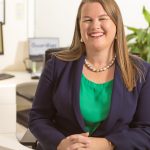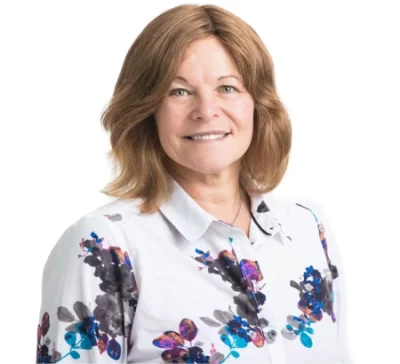
Charting a More Inclusive Future
This week is Inclusion at Work Week! #InclusionAtWorkWeek 2023, running from 6 to 10 November, is the Diversity Council of Australia’s annual celebration of diversity and inclusion in Australian workplaces.
For this article, we talked to three individuals about the importance of diversity and inclusion in the actuarial profession. We discussed how to foster a more inclusive environment, the benefits of diversity and inclusion to individual careers and the profession, and challenges to improving it.
Advice for actuaries looking to foster a more inclusive environment
When speaking to actuaries Julia Lessing and Iain Bulcraig, we noticed a common theme: the need to speak up to foster more inclusivity.
Julia said:
‘Inclusion starts with understanding, and doing this well takes courage.’

‘When working with others, have the courage to ask questions and listen carefully to the answers. The new person whose name you aren’t sure how to say? Ask them, “Can you help me pronounce your name correctly?’
Iain shared his personal experiences: ‘Personally, I have learned lots from having trusted conversations with people who have had greater inclusion challenges than me. Often people can dismiss these challenges or not realise they exist (including me, to be honest, in the earlier years of my career) so getting all people, particularly younger team members, to have suggestions for improvements in working environments is critical. Speak up and encourage others to speak up too.’
The impact of diversity and inclusion on careers
Iain and Julia shared the positive impact that diversity and inclusion has had on their individual careers. ‘Having worked in a number of countries as an actuary, I have loved interacting with people from many nationalities and ethnic backgrounds,’ said Iain.
‘This variety has improved me as a person through hearing stories of life before they became actuaries and getting invitations to weddings and other ceremonies that I would have never otherwise have attended.’

‘As a white, Scottish man, I have appreciated mentoring actuaries from different backgrounds and reflecting on challenges that I have not had to face in my career – this has made me a wiser individual when developing and supporting teams.’
For Julia, her experience of diversity and inclusion was closer to home. Julia said, ‘I had married and started my family while still at university, so I started my actuarial career as a mum with three small children. I didn’t fit the typical profile of a new actuarial graduate: I had juggled lectures and assignments with babies, so hadn’t taken any internships while at university.
‘However, the hiring managers saw my potential and thankfully offered me a job. After starting as a graduate, my managers were open to providing me with new kinds of flexibility that my colleagues hadn’t previously asked for. I felt included and had what I needed to succeed at work as a young mum.’
How diversity and inclusion benefit the field of actuarial science
Actuarial recruiter Lesley Traverso defines Diversity and inclusion as bringing together a range of mindsets. For her, it is about diversity of thought.
Indeed, a membership survey performed by the Actuaries Institute’s Diversity and Working Group in 2022 saw many members hone in on the importance of diversity of thought. According to Lesley,
‘Every individual has a unique range of inherited traits and lived experiences that have contributed to the way that they approach problems. Actuarial science is a lot about problem-solving. There is often no one right way to solve an issue. Bringing together a diverse group of people who challenge each other leads to strong outcomes.’
Iain highlighted the opportunity for actuaries to influence wider-than-traditional fields.
‘My daughter is thinking about becoming an actuary and I am excited when I see actuaries working in data science, environmental roles or supporting community services — there is no end to where these skills can take her,’ said Iain. ‘I see this expansion of “actuarial” work is led by having a highly diverse mindset for the newer members joining the profession.’
Key challenges for the profession in achieving greater diversity and inclusion
For Lesley, the greatest barriers are in achieving the actuarial qualification:
‘The actuarial profession provides anyone and everyone with an opportunity, where the judgment of value is focused on a specific qualification, rather than who you are. However, that itself is a two-edged sword.’

‘The focus on university education as being the ‘only’ pathway to qualification puts those from disadvantaged backgrounds and those who want to make a career change later in life at a disadvantage. The focus on this key pathway can also encourage employers to prioritise speed of qualification rather than other attributes, putting those taking career and exam breaks at a disadvantage.’
‘More could be done to encourage a greater diversity of entrants into the profession to bolster diversity within it.’
Iain said, ‘A constant challenge is how to ensure a diverse base of people can transition from being maths specialists to communicators, managers and, ultimately, business leaders presenting to Boards or similar bodies. Perhaps Artificial Intelligence can be used to support some of these gaps, particularly in removing some of the language barriers.’
‘I am proud of how the Actuaries Institute has shown diversity and thought leadership recently in their presidents and publications, so I think they are on the right track already.’
For Julia, the challenge of improving diversity and inclusion is in the way discrimination presents itself; she says bias is harder to tackle now because it is more covert.
‘Given the size of the issue, it can be easy to think that there’s nothing we can do as individuals,’ said Julia. ‘But this isn’t true – we all have a role to play. As leaders, we have to recognise that a lot has changed since we started our careers: the demographic profile of the profession, post-pandemic patterns of work, what younger actuaries want from their careers and cost of living pressures.
‘We can’t assume that everyone is ‘like us’ with the same challenges and aspirations we have.’
‘So, it starts with each of us, checking our assumptions, challenging our thinking, being curious and listening to each other.’
Looking forward
Our interviewees had a diverse range of responses to our discussion about diversity and inclusion! Creating a diverse and inclusive profession can lead to strong outcomes in problem-solving and help the actuarial profession to influence wider-than-traditional fields. Challenges with improving diversity and inclusion include encouraging greater diversity of entrants into the profession, helping our diverse base of members transition to effective communicators and business leaders, and tackling the more covert nature of bias in present-times. We can all play a role in improving diversity and inclusion in the workplace.
Want to get involved in Inclusion at Work Week? Use the hashtag #InclusionAtWorkWeek on social media to share how your workplace demonstrates its commitment to diversity and inclusion, and the difference it has made.
CPD: Actuaries Institute Members can claim two CPD points for every hour of reading articles on Actuaries Digital.






